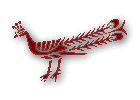 |
|
| ISSN 1084-7553 | |
| IJTS Vol. 1, No. 2 November 1995 |
|
| Editorial Note | |
| The Dance of... | |
| Setting | |
| The Tradition... | |
| The Guru... | |
| The Guru... | |
| The Tenth Day... | |
| The Eight Aspects... | |
| Conclusion... | |
| Computer Space | |
| News | |
| Letters | |
| Support The IJTS |
|
|
|
|
| Search |
|
| Register |
|
| Create Your Profile | |
| Recover Password | |
| Log In |
|
| Institutional Sub |
|
| none | |
| by Cathy Cantwell |
|
The Tradition of 'chams - Ritual Dance. VajrayAna rituals are intended to bring about a transformation of the physical, vocal and mental states of the practitioner, the nature of which depends on the specific class of the practice performed. A basic principle in the VajrayAna perspective is that all phenomena, including those of the emotional poisons, can be used to conquer Ignorance (Skt. avidyA) and express Enlightenment. In conventional Buddhism, dance is considered to be a form of sensual indulgence, and it is an activity from which monks and serious lay practitioners should refrain.8 In this VajrayAna tradition, the sensual experience of dancing and observing the dances, are transformed such that the richness of the forms and costumes, the grace and dramatic movements of the dance, all express different aspects of the qualities of realisation. Thus, practising and watching the dances can itself constitute the path to Enlightenment. VajrayAna rituals such as dance may be used primarily to aid the meditator or to aid practitioners and non-practitioners alike. Some rituals were particularly orientated to the benefit of lay audiences, and as Geoffrey Samuel (1978: 101) has discussed, were a necessary aspect of the relationship of reciprocity between religious monastics and lay sponsors. Public performances of 'chams were an example of this. They may be part of numerous yi-dam (deity) cycles, different stages of practice and various types of ritual activities, but in general, their elaborate display of Enlightened qualities is said to be suited for the illumination of the widest possible human audience, and in particular, it is designed to bring about "Liberation through seeing" (mthong-grol).9 [This is a preview of the full page; if you are a member of the Asiatica Association and have access to the IJTS, please login using the box on the left menu; non members: please become a member to support the Asiatica Association, and get full access to our publications.] |
|
©1995-2006 Asiatica Association. All Rights Reserved
site development L. Magnocavallo / site comments E. Garzilli |